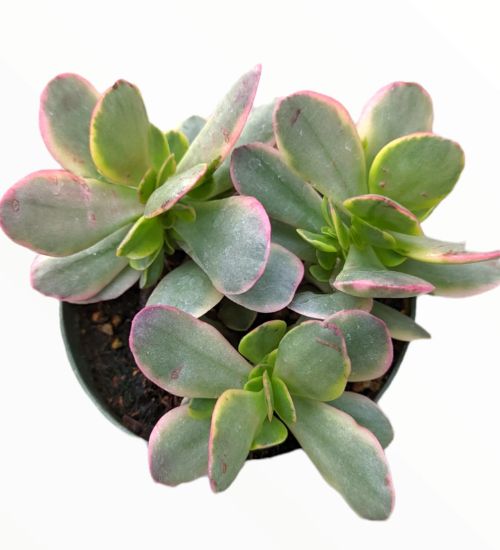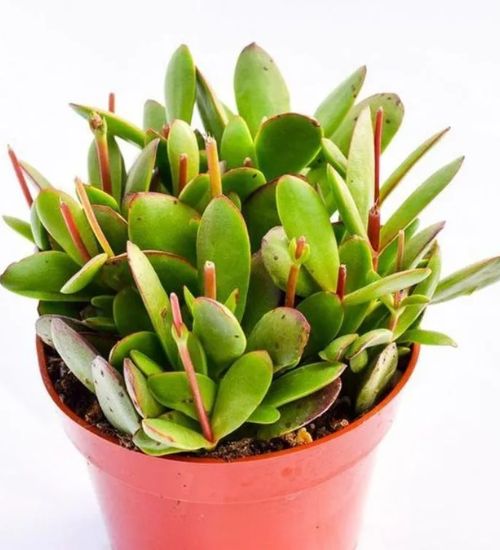Sun: full sun
Water: Typical water needs for a succulent
Temperature: Zone 1a from -60° F to -55° F (-51.1 ° C to -48,3° C) to Zone 11b from 45° F to 50° F (7.2° C to 10° C)
Winter Survival: Cold hardy to 0°C
Propagation: cuttings, seeds
Flower: in the Fall
Flower Type: Green, white
Toxic: Generally non-toxic to humans and animals
Dormant: summer
Space Requirement: Indoors & Outdoors
Common Problems: Plants may rot if overwatered, Fungal diseases, pests
Where to buy Crassula platyphylla?
Basc Care for Crassula platyphylla
Watering
You can water your succulent more than often in extreme conditions but make sure that the soil is completely dry before watering your succulent again.
One simple tip for you is that you can use some online apps to check the soil status before you go water your succulents. I would recommend the ThePlantsCheck app, it has some nice features there.
Fertilizing
Only feed this succulent during its active growing seasons which means winter. Use the right fertilizer applied in the right amounts. Applying half-strength balanced fertilizer every month or so is recommended for optimal results.
Do not fertilize during summer as the plant is dormant.
Sun & Location Requirements for "Crassula platyphylla"
Crassula platyphylla requires full sun in order to thrive. When choosing a spot for your succulent, make sure it gets at least 6 hours of direct sunlight per day. If the leaves start to look pale or weak, this could be an indication that the succulent isn't getting enough light.
As per this succulent profile, it is only able to stay healthy when the environment temperature is above the range of zone 1a from -60° F to -55° F (-51.1 ° C to -48,3° C).
Crassula platyphylla is a unique species that has adapted to its environment and can withstand temperatures as low as 0°F. Its thick leaves act as insulation, helping protect the plant from frost damage while also preventing moisture loss in arid climates. Additionally, its deep root system allows it to pull up reserves of water and nutrients even during the coldest winters.
Any succulents in the group will need a medium space to grow. You can place your pot at your table or window. Since this plant needs more space than mini succulents, you should consider do not plant them together with other succulents/plants.
Propagation
One way to propagate Crassula platyphylla is by cutting
Propagating Crassula platyphylla from seeds is a great way to produce new plants without relying on cuttings or divisions. It's important to look for healthy, dark and plump seeds that are slightly sticky when touched. The soil should be pre-mixed with well-draining potting mix, before evenly sowing the seeds and pressing them into the surface. To ensure successful germination, gentle misting of the soil should be done and placed in indirect light.
Toxicity

Crassula platyphylla is not known to pose any significant health risks, as it is not considered to be toxic. However, it is best to keep the plant away from young children and pets, as they may ingest some of the parts of this plant that could contain toxins which can cause mild skin irritation.
Pests and Diseases
Crassula platyphylla can be affected common pests and diseases like most of the other succulents such as aphids and mealybugs.
If you do spot any of pest signs, you can treat your succulent using below methods.
- Aphids: quarantine, clean infected plants, soapy water.
- Mealybugs: quarantine, clean infected plants, soapy water.
Besides that, to prevent serious health issues from happening, keep your succulent in a well-ventilated area and check it regularly for any signs of pests or health problems.


